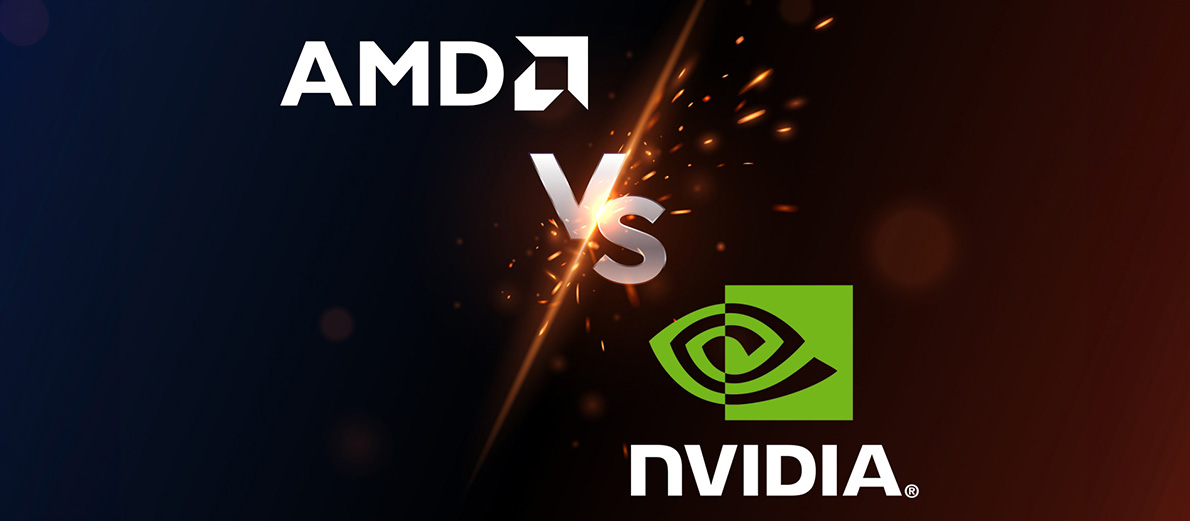NVIDIA GeForce RTX 40 Series vs. AMD Radeon RX 7000 Series
Monday, April 22, 2024
Let’s delve into the NVIDIA GeForce RTX 40 series and the AMD Radeon RX 7000 series.
These two GPU families have been making waves in the gaming and content
creation communities.
Top Selling GPUs Sale on Amazon
Buckle up as we explore their features, performance, and overall value.
Price and Affordability
When it comes to pricing, AMD’s Radeon GPUs tend to be more budget-friendly than their NVIDIA counterparts. The top-of-the-line Radeon RX 7900 XTX is priced at $999, while the less powerful Radeon RX 7900 XT comes in at $899. In comparison, NVIDIA’s GeForce RTX 4080 starts at $1,199, and the beefier RTX 4090 begins at $1,599. These prices represent a hike from the previous generation, where the RTX 3080 and RTX 3090 were priced at $699 and $1,499, respectively.
Specs Comparison
Let’s take a closer look at the specifications of these GPUs:
-
AMD Radeon RX 7900 XT:
- Compute Units: 84
- Ray Accelerators: 84
- Game Frequency: 2000 MHz
- Infinity Cache: 80
- Max Memory Size: 20GB GDDR6
-
AMD Radeon RX 7900 XTX:
- Compute Units: 96
- Ray Accelerators: 96
- Game Frequency: 2300 MHz
- Infinity Cache: 96
- Max Memory Size: 24GB GDDR6
-
NVIDIA RTX 4080:
- Compute Units: N/A
- Ray Accelerators: N/A
- Max Memory Size: 16GB GDDR6X
-
NVIDIA RTX 4090:
- Compute Units: N/A
- Ray Accelerators: N/A
- Max Memory Size: 24GB GDDR6X
Performance and Ray Tracing
In terms of raw gaming performance, the RTX 4090 outshines the Radeon RX 7900 XTX by a significant margin. In 4K gaming tests, the RTX 4090 averaged 113 frames per second (fps), while the RX 7900 XTX managed 76.4 fps on average. That’s a whopping 47% increase for the RTX 4090.
However, when it comes to ray tracing, the Radeon RX 7000 series holds its ground. While AMD’s ray tracing performance generally lags behind NVIDIA’s, it’s still commendable. Additionally, AMD introduces an AI-based rendering feature called FSR (FidelityFX Super Resolution), which aims to improve frame rates. Although not as mature as NVIDIA’s DLSS (Deep Learning Super Sampling), it’s a step in the right direction.
Content Creation and Power Consumption
For content creators, both GPU families offer impressive capabilities. NVIDIA’s RTX 40 series excels in raw performance, especially for tasks like video editing and 3D rendering. However, AMD’s Radeon RX 7000 series is no slouch either. The RX 7900 XTX performs admirably in content creation workloads, and its chiplet design (a first for AMD) adds an intriguing twist.
Regarding power consumption, the Radeon RX 7000 cards are power-hungry, with the RX 7900 XTX peaking at 413W. In contrast, the RTX 4090 tops out at 366W, and the faster RTX 4080 stays below 244W. NVIDIA’s efficiency is evident here, but it’s essential to consider your system’s power supply and cooling capabilities.
Conclusion
In the battle of NVIDIA vs. AMD, both companies have delivered impressive GPUs. If you’re looking for raw gaming power and ray tracing performance, the RTX 40 series might be your go-to. However, if you’re budget-conscious and appreciate AMD’s innovations, the Radeon RX 7000 series offers excellent value. Ultimately, the choice depends on your priorities and wallet size.
Happy gaming and creating! 🎮🎨
